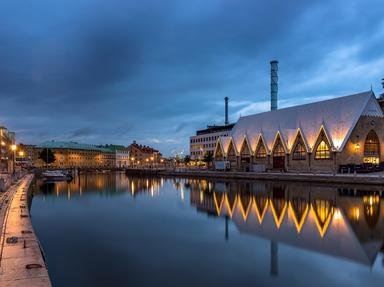1. What is the geopolitical region in which we can find Sweden?
From Quiz A Swedish Smorgasbord!
Answer:
Scandinavia
The term dates from the 18th century. Scandinavia is an historical, cultural, and linguistic area in Northern Europe, generally comprised of Norway, Sweden, and Denmark. The peninsula which Sweden and Norway share is the Scandinavian Peninsula. The Swedish, Norwegian, and Danish languages are part of a dialect continuum of Scandinavian languages, which is to say they are all rather mutually intelligible -- conveniently.
Sometimes Iceland and Finland are considered part of Scandinavia in anglophonic writing because of their proximity and history, but when including these countries the better term would be "Nordic countries", which also encompasses the Faroe Islands and Greenland.
The Balkans comprise the southern European nations of Croatia, Bosnia & Herzegovina, Serbia, Kosovo, Montenegro, Macedonia, Albania, Bulgaria, and Romania, and some sources include Slovenia, Eastern Thrace (the European part of Turkey), and Moldova -- though there is no universal agreement. Balochistan is a desert region covering the Iranian plateau and parts of southwestern Afghanistan. The Greater Antilles consist of the Caribbean islands of Cuba, Hispaniola, Puerto Rico, and Jamaica.





 = Top 5% Rated Quiz,
= Top 5% Rated Quiz,
 Top 10% Rated Quiz,
Top 10% Rated Quiz,